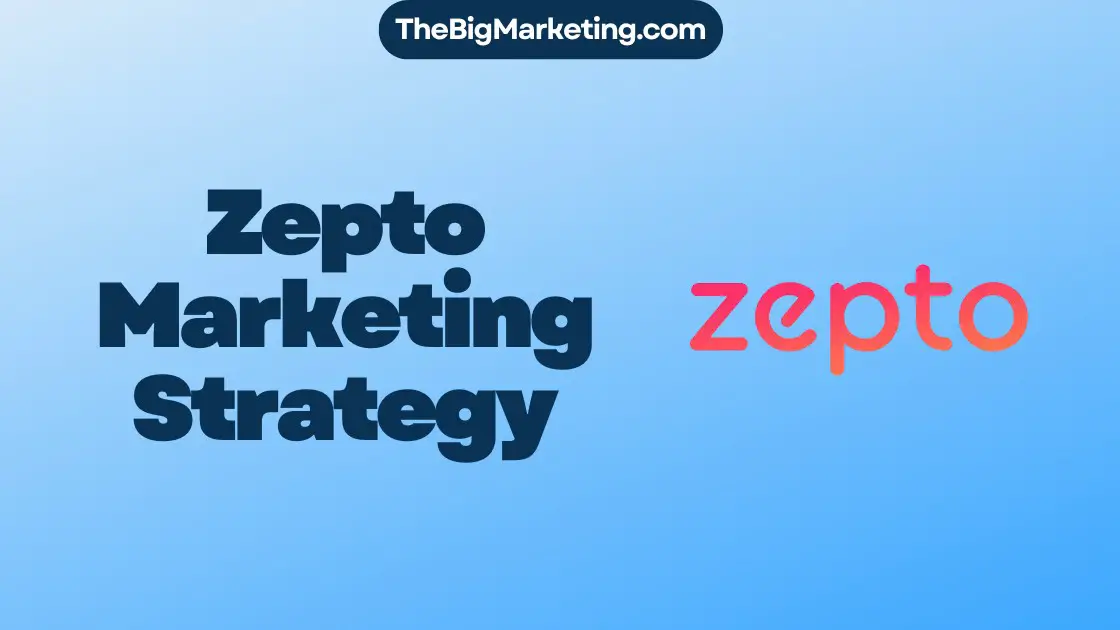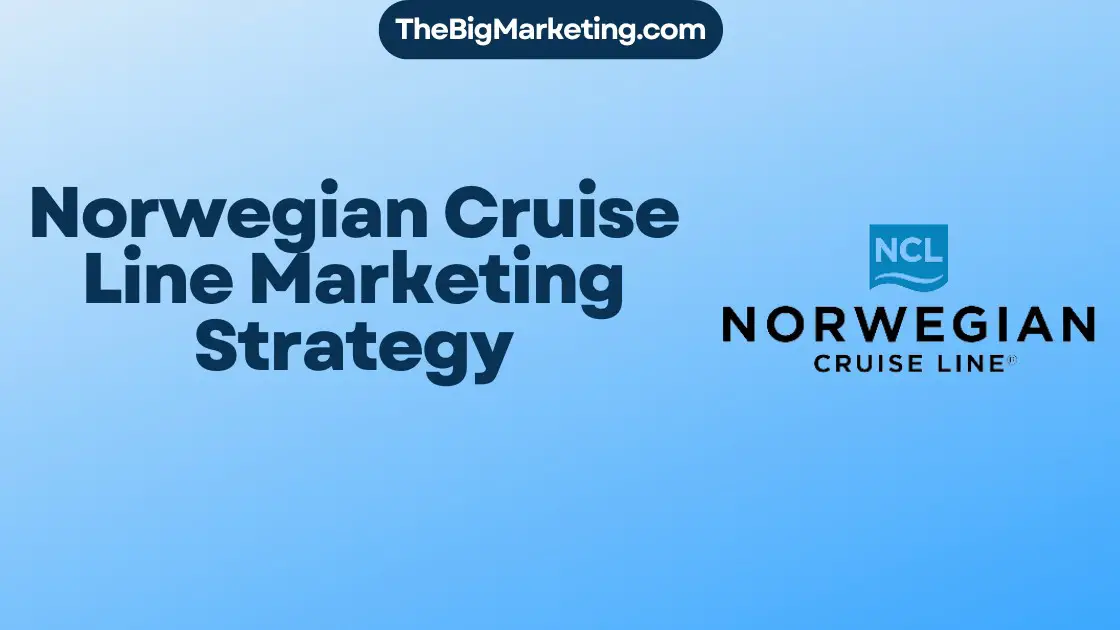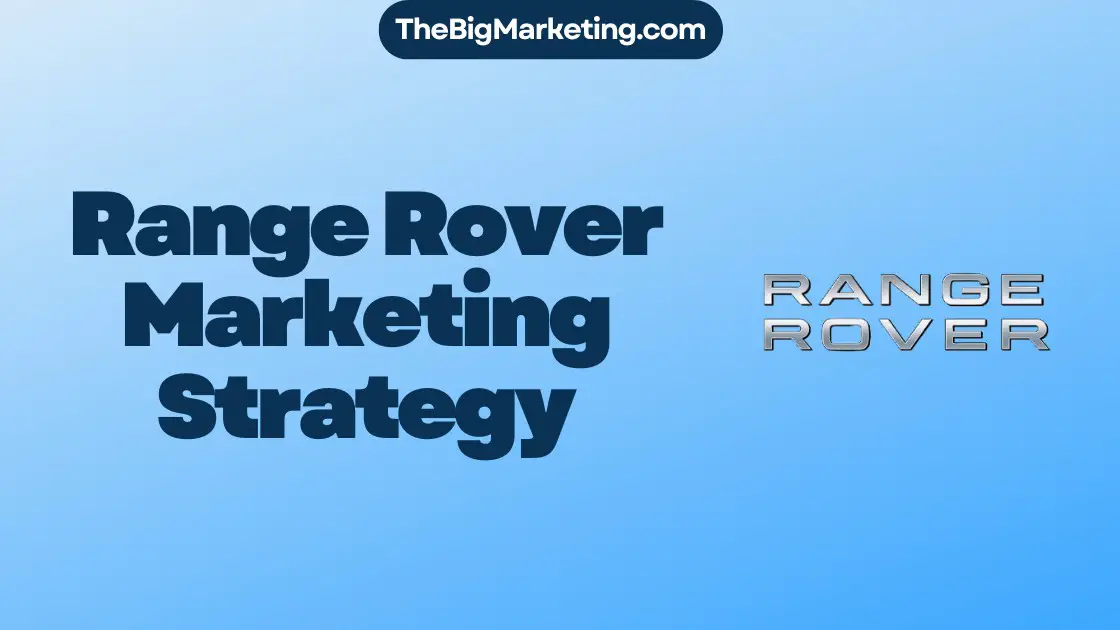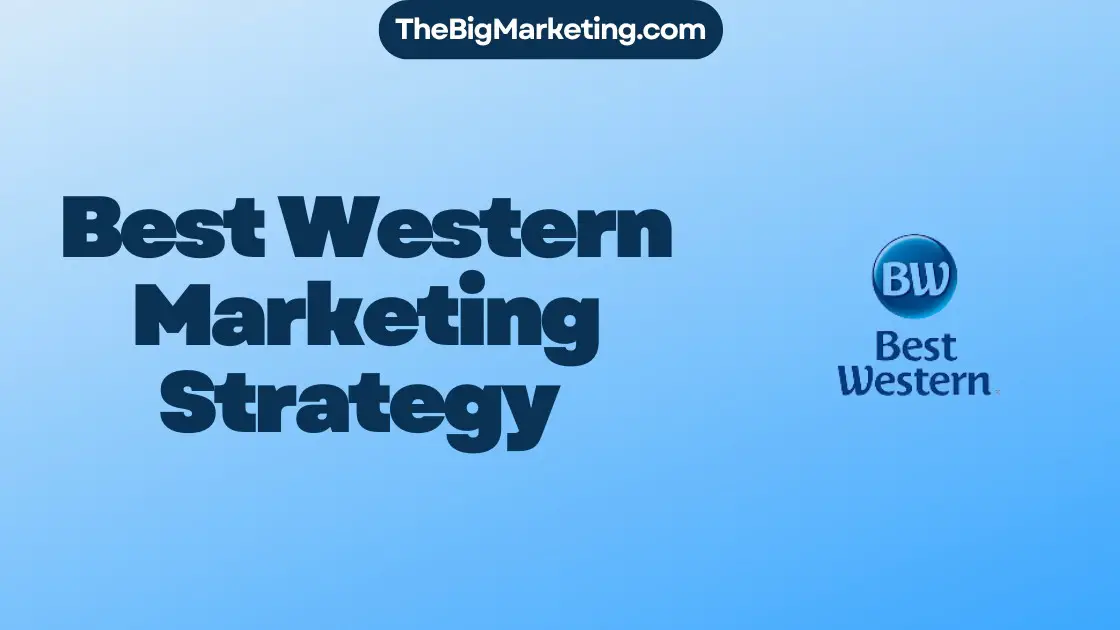Inbound marketing is rapidly becoming the go-to B2B marketing strategy, shifting the focus from traditional outbound tactics to attracting potential customers through valuable content. This approach has gained significant traction, with nearly half of CEOs already integrating inbound marketing into their strategies to attract potential customers.
In 2024, B2B inbound marketing is poised to play a pivotal role in the success of businesses across industries. To ensure you’re on the right track, this comprehensive guide will walk you through the key elements and best practices of B2B inbound marketing strategy.
Key Takeaways:
- B2B inbound marketing focuses on attracting potential customers through valuable content.
- Nearly half of CEOs have integrated inbound marketing into their strategies.
- B2B inbound marketing strategy is essential in 2024 for effective customer attraction and engagement.
- This guide provides a complete overview of B2B inbound marketing strategy in 2024.
- Implementing the best practices outlined here can drive lead generation and boost sales.
What is B2B inbound marketing?
B2B inbound marketing is an effective marketing strategy that focuses on attracting potential customers through valuable content, rather than relying solely on traditional outbound tactics. This marketing approach aims to establish a company as a trusted authority in its industry and guide buyers through the buyer’s journey. The main objective of B2B inbound marketing is to attract potential customers who actively seek out the company’s products or services on their own.
Unlike outbound marketing, which interrupts potential customers with intrusive messages, B2B inbound marketing seeks to provide value and build long-term relationships with prospects. By creating informative and engaging content, businesses can position themselves as industry leaders and attract the attention of their target audience.
One of the key components of B2B inbound marketing is lead generation. By offering valuable content and resources, businesses can entice potential customers to provide their contact information in exchange for access to the content. This allows businesses to capture leads and nurture them throughout the buyer’s journey.
Benefits of B2B Inbound Marketing
B2B inbound marketing offers several benefits for businesses:
- Increased Lead Generation: By offering valuable content, businesses can attract high-quality leads who are genuinely interested in their products or services.
- Improved Buyer’s Journey: B2B inbound marketing guides potential customers through the different stages of the buyer’s journey, providing them with the information they need to make informed purchasing decisions.
- Established Authority: By consistently creating valuable content and demonstrating expertise in their industry, businesses can establish themselves as trusted authorities and build credibility among their target audience.
- Long-Term Relationships: B2B inbound marketing focuses on building long-term relationships with customers, leading to repeat business and customer loyalty.
Implementing a well-structured B2B inbound marketing strategy can significantly impact a business’s growth and success. By focusing on providing value and building relationships, businesses can attract high-quality leads, nurture them throughout the buyer’s journey, and ultimately drive conversions and sales.
| Inbound Marketing | Outbound Marketing |
|---|---|
| Attracts potential customers through valuable content and resources | Interrupts potential customers with intrusive messages and advertisements |
| Establishes a company as a trusted authority in its industry | Relies on pushing marketing messages to potential customers |
| Guides customers through the buyer’s journey | Does not focus on guiding customers through the purchasing process |
| Builds long-term relationships with customers | Primarily focused on short-term results |
By adopting B2B inbound marketing strategies, businesses can align their marketing efforts with the way modern buyers research and make purchasing decisions. This approach not only helps businesses attract qualified leads but also build trust, establish authority, and drive long-term growth.
Types of inbound marketing
Inbound marketing harnesses a range of effective tactics to attract potential customers through valuable content. These diverse inbound marketing strategies engage and educate the target audience, optimize website visibility on search engines, and capture leads through personalized email campaigns.
Content Marketing
Content marketing is a fundamental inbound marketing tactic that involves creating and distributing high-quality content such as blog posts, ebooks, and whitepapers. By providing valuable information, businesses can position themselves as industry thought leaders, attract their target audience, and nurture long-lasting customer relationships.
Search Engine Optimization (SEO)
Search Engine Optimization (SEO) encompasses a set of techniques used to optimize a website’s visibility in search engine results pages. By employing relevant keywords, optimizing meta tags, and enhancing website architecture, businesses can improve their search engine rankings and attract organic traffic.
Social Media Marketing
Social media marketing leverages popular platforms like LinkedIn, Twitter, and Facebook to engage with the target audience, build brand awareness, and foster meaningful customer connections. By sharing valuable content, participating in discussions, and running targeted campaigns, businesses can build a loyal following and drive website traffic.
Email Marketing
Email marketing is a powerful inbound marketing tactic that enables businesses to nurture leads, educate prospects, and build customer loyalty. By sending personalized and relevant emails, businesses can deliver valuable content directly to the audience’s inbox, increasing open rates, click-through rates, and conversions.
User-Generated Content
User-generated content involves harnessing the power of customers to create and share content on behalf of a brand. This can include testimonials, reviews, social media posts, and blog comments. User-generated content not only provides social proof but also enhances brand credibility and encourages engagement from the target audience.
Inbound Marketing Tactics at a Glance
| Tactic | Description |
|---|---|
| Content Marketing | Creation and distribution of valuable content to attract and engage the target audience. |
| Search Engine Optimization (SEO) | Optimizing website visibility on search engine results pages to drive organic traffic. |
| Social Media Marketing | Utilizing social media platforms to build brand awareness and engage with the target audience. |
| Email Marketing | Sending personalized emails to nurture leads, educate prospects, and drive conversions. |
| User-Generated Content | Harnessing customer content to enhance brand credibility and encourage engagement. |
Difference between B2B inbound marketing and outbound marketing
When it comes to marketing methodology, B2B inbound marketing and outbound marketing are two distinct approaches. B2B inbound marketing focuses on attracting potential customers by providing valuable content and positioning the company as an industry authority. This strategy utilizes various tactics such as content marketing, search engine optimization (SEO), social media marketing, and email marketing.
Content marketing is at the core of B2B inbound marketing. By creating informative blog posts, ebooks, whitepapers, and other valuable resources, businesses can position themselves as thought leaders in their industry. Implementing SEO practices ensures that this content is visible to potential customers when they search for relevant information, driving organic traffic to the company’s website.
Social media marketing is another crucial component of B2B inbound marketing. By leveraging platforms like LinkedIn, Twitter, and Facebook, businesses can engage with their target audience, share valuable content, and build brand awareness. Additionally, email marketing allows companies to nurture leads and establish personalized communication with potential customers.
On the other hand, outbound marketing takes a more proactive approach by pushing marketing messages to potential customers. Strategies like cold calling, print or online advertisements, and direct mail are commonly used in outbound marketing. While outbound marketing can reach a wide audience, it often involves interruptive tactics that may not resonate with today’s consumers.
The table below summarizes the key differences between B2B inbound marketing and outbound marketing:
| B2B Inbound Marketing | B2B Outbound Marketing |
|---|---|
| Focuses on attracting potential customers through valuable content | Pushes marketing messages to potential customers |
| Utilizes content marketing, SEO, social media marketing, and email marketing | Relies on tactics like cold calling, print or online advertisements, and direct mail |
| Positions the company as an industry authority | Targets a wide audience but may be interruptive |
| Builds long-term trust and credibility | Often focused on short-term results |
While both B2B inbound marketing and outbound marketing have their merits, many businesses are shifting their focus towards inbound marketing strategies. By delivering valuable content, establishing trust, and engaging with potential customers, B2B inbound marketing can drive long-term success and foster meaningful customer relationships.
Best practices for B2B inbound marketing
Implementing best practices is crucial for a successful B2B inbound marketing strategy. These practices encompass several key areas that optimize the effectiveness of your campaigns and drive valuable results.
1. Create Detailed Buyer Personas
Developing detailed buyer personas is essential for understanding your target audience’s needs, preferences, and pain points. By creating accurate and comprehensive buyer personas, you can tailor your content and campaigns to resonate with your ideal customers, ultimately driving better engagement and conversions.
2. Develop a Rich Content Strategy
A robust content strategy is the backbone of any successful B2B inbound marketing strategy. It involves creating high-quality, insightful content that educates and engages your target audience at every stage of their buyer’s journey. From blog posts and ebooks to whitepapers and case studies, a diverse range of content formats helps establish your brand as a trusted authority in your industry.
3. Implement SEO Best Practices
Optimizing your website and content for search engines is essential to ensure your brand’s visibility and reach. By conducting keyword research, optimizing on-page elements, and creating valuable backlinks, you can improve your search engine rankings and maximize organic traffic to your website.
4. Leverage Social Media Platforms
Social media platforms provide a powerful channel for reaching and engaging with your target audience. Develop a strong presence on platforms like LinkedIn, Twitter, and Facebook, and share valuable content, engage in conversations, and build relationships with your prospects. Social media also allows you to amplify the reach of your content and drive more traffic to your website.
5. Capture Leads through Opt-in Forms
Lead capture is a critical component of any B2B inbound marketing strategy. Use strategically placed opt-in forms on your website to capture visitor information, such as email addresses, in exchange for valuable content or offers. This allows you to build a database of leads that you can nurture and guide through the buyer’s journey.
6. Nurture Leads with Personalized Email Campaigns
Email campaigns are an effective way to nurture your leads and guide them towards a purchase decision. Develop personalized email sequences that provide relevant content, address pain points, and showcase the value of your products or services. By delivering targeted and timely messages, you can move leads further down the sales funnel and increase conversions.
7. Monitor Performance through Marketing Analytics
Tracking and analyzing the performance of your inbound marketing efforts is crucial for optimizing your strategy. Utilize marketing analytics tools to measure key metrics, such as website traffic, conversion rates, lead quality, and revenue generated. These insights will help you identify areas for improvement and make data-driven decisions to enhance your campaigns.
By following these best practices, B2B companies can create a powerful and effective inbound marketing strategy that attracts, engages, and converts their ideal customers.
| Benefits of Implementing Best Practices | Actions |
|---|---|
| Enhanced targeting and engagement | Create detailed buyer personas |
| Establishment as a trusted authority | Develop a rich content strategy |
| Increased visibility and organic traffic | Implement SEO best practices |
| Expanded reach and brand awareness | Leverage social media platforms |
| Generation of high-quality leads | Capture leads through opt-in forms |
| Improved lead nurturing and conversion | Nurture leads with personalized email campaigns |
| Optimized campaign performance | Monitor performance through marketing analytics |
B2B ecommerce and its benefits
B2B ecommerce has revolutionized the way businesses buy and sell goods and services. By leveraging online channels, B2B companies can streamline their operations, improve efficiency, and unlock numerous benefits that enhance their overall performance. Let’s explore the advantages of B2B ecommerce:
Improved Efficiency
One of the primary benefits of B2B ecommerce is the improved efficiency it brings to the purchasing process. With online channels, businesses can access a wide range of products and services at their fingertips, eliminating the need for time-consuming manual processes. This efficiency not only saves valuable time but also reduces the risk of errors and increases productivity.
Reduced Order Processing Time
Online B2B platforms enable businesses to place orders quickly and efficiently. By automating the order processing system, B2B ecommerce reduces the time taken to process and fulfill orders. This not only speeds up the purchasing cycle but also enhances customer satisfaction, leading to repeat business and long-term partnerships.
Improved Inventory Management
B2B ecommerce platforms provide real-time visibility into inventory levels, enabling businesses to manage their inventory more effectively. By monitoring stock levels and receiving automated notifications for reordering, companies can avoid stockouts and streamline their inventory management processes. This leads to improved accuracy, reduced holding costs, and increased customer satisfaction.
Simplified Reordering
Traditional reordering processes often involve manual calculations and time-consuming communication with suppliers. B2B ecommerce simplifies the reordering process by allowing businesses to set up automated reorder triggers based on predefined thresholds. This automated system ensures a seamless and efficient reordering process, reducing the risk of errors and delays.
While B2B ecommerce offers significant benefits, businesses must also address challenges such as the initial investment required and security concerns. However, the long-term advantages and improved operational efficiency make B2B ecommerce an essential strategy for businesses looking to thrive in the digital age.
Types of B2B ecommerce
B2B ecommerce is a widely used platform that benefits various types of businesses, including consultants, agencies, software as a service (SaaS) companies, producers, and distributors. Let’s take a closer look at each category:
Consultants and Agencies
Consultants and agencies leverage B2B ecommerce to offer specialized knowledge and services to their clients. They provide expert advice and assistance to businesses, contributing to their growth and success.
Software as a Service (SaaS) Companies
SaaS companies utilize B2B ecommerce to offer software solutions through subscription models. This approach allows businesses to access and use software applications without the need for purchasing, installing, and managing the software on their own servers.
Producers
Producers utilize B2B ecommerce platforms to distribute their products to other companies. This form of online distribution helps streamline the supply chain, making it more efficient and cost-effective for both the producer and the recipient businesses.
Distributors
Distributors play a vital role in the B2B ecommerce ecosystem by selling goods to retailers and businesses. They connect manufacturers and producers with the end consumers, ensuring smooth transactions and timely delivery of products.
By embracing B2B ecommerce technologies, businesses in these categories can streamline their operations, reach a wider audience, and drive growth in today’s digital marketplace.
Comparison of B2B Ecommerce Business Types
| Business Type | Key Features | Main Focus |
|---|---|---|
| Consultants and Agencies | Specialized knowledge and services | Providing expert advice and assistance |
| Software as a Service (SaaS) Companies | Subscription-based software solutions | Delivering scalable and accessible software |
| Producers | Manufacturing and distributing products | Ensuring efficient supply chain management |
| Distributors | Selling goods to retailers and businesses | Connecting manufacturers with end consumers |
Applying B2B content marketing
B2B content marketing is a powerful strategy that helps businesses raise brand awareness, engage with other companies, generate leads, and boost sales. Unlike B2C marketing, B2B content marketing focuses on providing information that is tailored to the specific needs of the target audience and takes into account the factors that influence their purchasing decisions.
To effectively apply B2B content marketing, it is essential to utilize various tactics that align with the goals of your business. One of the most effective tactics is creating and maintaining a blog. A blog allows you to share valuable and informative content that establishes your authority in the industry and attracts potential customers. By consistently publishing relevant articles, you can increase your brand’s visibility, drive organic traffic to your website, and enhance your SEO (search engine optimization) efforts.
In addition to blogging, it is important to optimize your website and content for SEO. By conducting thorough keyword research and implementing SEO best practices, you can improve your search engine rankings and increase the organic visibility of your brand. This, in turn, enhances your brand awareness and helps you reach a wider audience of potential customers.
To further amplify your B2B content marketing efforts, consider leveraging social media platforms. Establish a presence on platforms such as LinkedIn, Twitter, and Facebook, where you can share your blog posts, engage with your audience, and foster meaningful connections with other businesses. Social media marketing allows you to extend your reach and build relationships, thus increasing the likelihood of generating leads and driving sales.
Another effective strategy is creating valuable gated content. Gated content refers to premium resources such as ebooks, whitepapers, or case studies that require users to provide their contact information in exchange for access. By offering valuable content behind a gate, you can capture leads and nurture them through personalized email campaigns, ultimately boosting your sales and revenue.
Tips for Implementing B2B Content Marketing:
- Create a content strategy that aligns with your business goals and target audience.
- Consistently produce high-quality blog posts that provide value and address your audience’s pain points.
- Optimize your website and content for SEO to improve search engine rankings.
- Establish a presence on social media platforms and engage with your audience.
- Create valuable gated content to capture leads and nurture them through personalized email campaigns.
- Analyze and measure the performance of your content marketing efforts using marketing analytics tools.
By following these tips and implementing a strategic B2B content marketing approach, you can effectively raise brand awareness, generate leads, and boost sales for your business.
| Tactic | Benefits |
|---|---|
| Blogging |
|
| SEO Optimization |
|
| Social Media Marketing |
|
| Gated Content |
|
Retargeting ads for lead generation
B2B companies often have longer sales cycles, which require multiple interactions with prospects. In order to keep the brand at the forefront of the audience’s mind and move prospects along the sales funnel, retargeting ads or remarketing can be highly effective. By utilizing specialized landing pages, making changes to ads, creating supplementary sales materials, and implementing cross-channel retargeting, B2B marketers can effectively generate leads and increase conversions.
Why Retargeting Ads Matter
Retargeting ads, also known as remarketing, offer B2B marketers an opportunity to reconnect with website visitors who have shown initial interest in their products or services. By presenting targeted ads to these prospects as they browse other websites or social media platforms, companies can effectively reinforce their brand messaging and stay top-of-mind throughout the buyer’s journey.
Developing a Retargeting Strategy
A successful B2B retargeting strategy involves several key steps:
- Create Specialized Landing Pages: Develop landing pages tailored to specific audience segments or campaign objectives. These pages should provide relevant information and drive visitors towards desired actions.
- Make Changes to Ads: Optimize retargeting ads with compelling messaging and strong calls-to-action to increase click-through rates and conversions.
- Produce Supplementary Sales Materials: Support the retargeting efforts with additional resources such as case studies, whitepapers, and product demos to provide further value and encourage engagement.
- Utilize Cross-Channel Retargeting: Extend retargeting efforts beyond display ads and explore opportunities for cross-channel retargeting on platforms like social media, email, and search.
The Benefits of Retargeting Ads
Retargeting ads provide B2B companies with several notable benefits:
- Increased Brand Visibility: By consistently appearing in front of prospects, retargeting ads help to reinforce brand recognition and establish credibility.
- Improved Conversions: By targeting users who have already displayed interest, retargeting ads have a higher chance of driving conversions and capturing leads.
- Personalized Messaging: Retargeting allows for highly targeted and tailored messaging to specific audience segments, increasing relevance and engagement.
- Optimized Sales Funnel: By guiding prospects through the sales funnel with retargeting ads, companies can encourage deeper engagement and move prospects closer to making a purchase.
Overall, B2B retargeting ads play a crucial role in lead generation and nurturing. By implementing a well-designed retargeting strategy and leveraging the benefits it offers, B2B marketers can effectively engage potential customers and drive conversions.
The importance of inbound marketing for B2B businesses
Inbound marketing is a critical factor in the success of B2B businesses. By adopting this strategy, companies can reap numerous benefits that contribute to growth, profitability, and customer loyalty. Let’s explore the key reasons why inbound marketing is vital for B2B businesses:
Shortens the Sales Cycle
One of the significant advantages of inbound marketing is its ability to shorten the sales cycle. Through valuable content creation and targeted messaging, inbound marketing attracts prospects who are already interested and ready to engage with your offerings. By nurturing these leads through the buyer’s journey, businesses can accelerate the sales process and convert leads into customers more efficiently.
Increases ROI
Inbound marketing consistently delivers a higher return on investment (ROI) compared to traditional outbound marketing methods. By utilizing content marketing, search engine optimization (SEO), social media engagement, and personalized marketing campaigns, businesses can reach a wider audience at a fraction of the cost associated with outbound tactics. The cost-efficiency and effectiveness of inbound marketing result in higher ROI and improved profitability.
Builds Trust and Credibility
Inbound marketing fosters trust and credibility among potential customers. By consistently providing valuable and relevant content, businesses establish themselves as industry authorities and build trust with their target audience. This trust translates into a higher likelihood of prospects choosing their products or services over competitors, leading to increased conversions and customer loyalty.
Provides Consistent Results
When executed effectively, inbound marketing provides consistent and measurable results. By leveraging data analytics and monitoring key performance indicators (KPIs), businesses can track the impact of their marketing efforts and make data-driven decisions. This level of visibility enables continuous improvement and optimization, ensuring consistent results over time.
Allows for Personalized Marketing
Inbound marketing enables businesses to deliver personalized marketing experiences to their target audience. By leveraging buyer personas, businesses can tailor their content and messaging to address the specific pain points, preferences, and needs of their ideal customers. Personalized marketing fosters stronger connections with prospects and drives higher engagement, ultimately leading to increased conversions and customer satisfaction.
Creates a Cohesive Brand Across All Channels
Inbound marketing plays a vital role in building a cohesive brand identity across all marketing channels. By consistently delivering valuable content, maintaining a unified brand voice, and providing a seamless user experience, businesses can create a strong brand presence. A cohesive brand builds recognition, trust, and loyalty, influencing purchasing decisions and driving long-term success.
Embracing inbound marketing is essential for B2B businesses looking to thrive in today’s competitive landscape. Its ability to shorten the sales cycle, increase ROI, build trust and credibility, deliver consistent results, enable personalized marketing, and create a cohesive brand makes it a powerful strategy for attracting high-quality leads and fostering lasting customer partnerships.
Conclusion
In conclusion, B2B inbound marketing strategy is crucial for B2B businesses in 2024. This strategy enables businesses to effectively attract and engage their target audience by creating valuable content, utilizing various digital marketing tactics, and personalizing their marketing efforts. By implementing B2B ecommerce, content marketing, SEO, and social media marketing, businesses can establish trust, generate leads, and drive sales.
B2B inbound marketing strategy involves creating content that is relevant, informative, and valuable to the target audience. Businesses need to understand their customers’ needs and pain points to provide valuable solutions through their content. By doing so, they can attract and engage potential customers, building trust and credibility for their brand.
Utilizing various digital marketing tactics such as SEO and social media marketing is essential for effective B2B inbound marketing. Optimizing the website for search engines helps improve visibility and drive organic traffic. Engaging with the target audience through social media platforms allows businesses to interact, build relationships, and share valuable content.
Personalized marketing plays a crucial role in B2B inbound marketing strategy. By tailoring marketing efforts to individual buyer personas, businesses can provide a personalized experience that resonates with their target audience. This helps establish a connection, build trust, and ultimately generate more leads and drive conversions.






